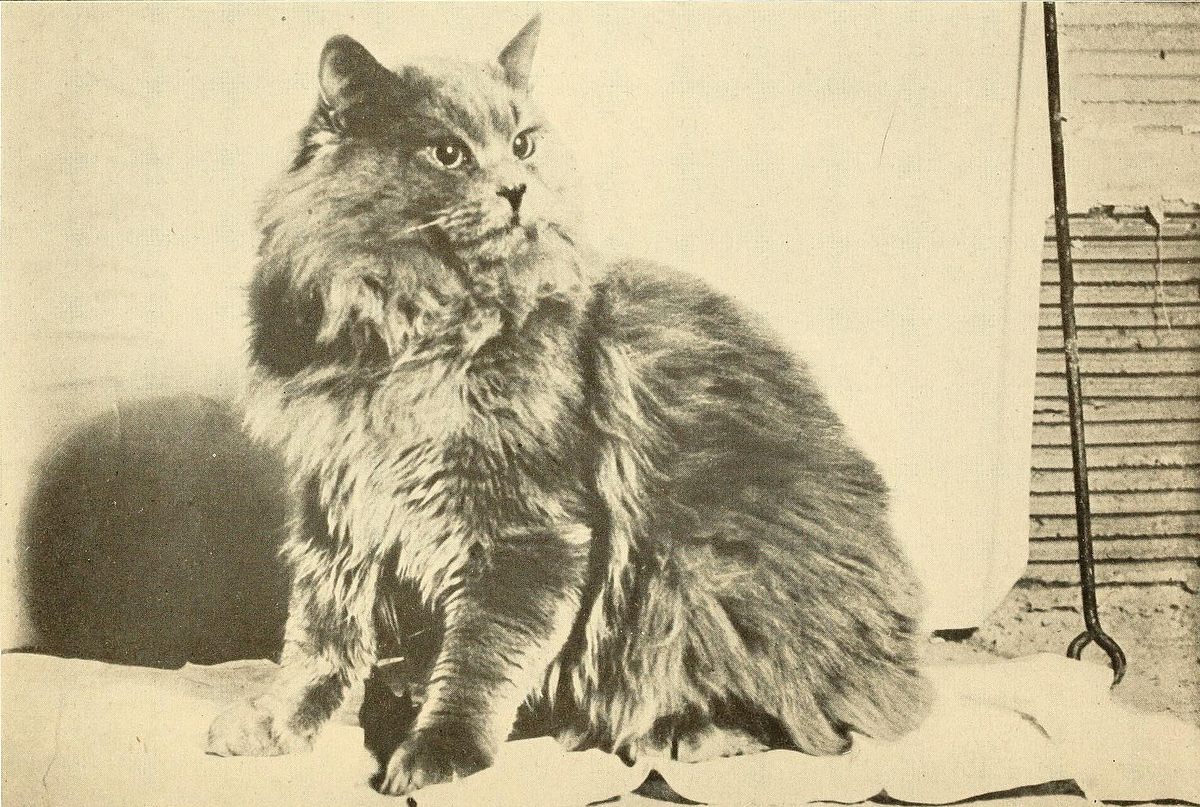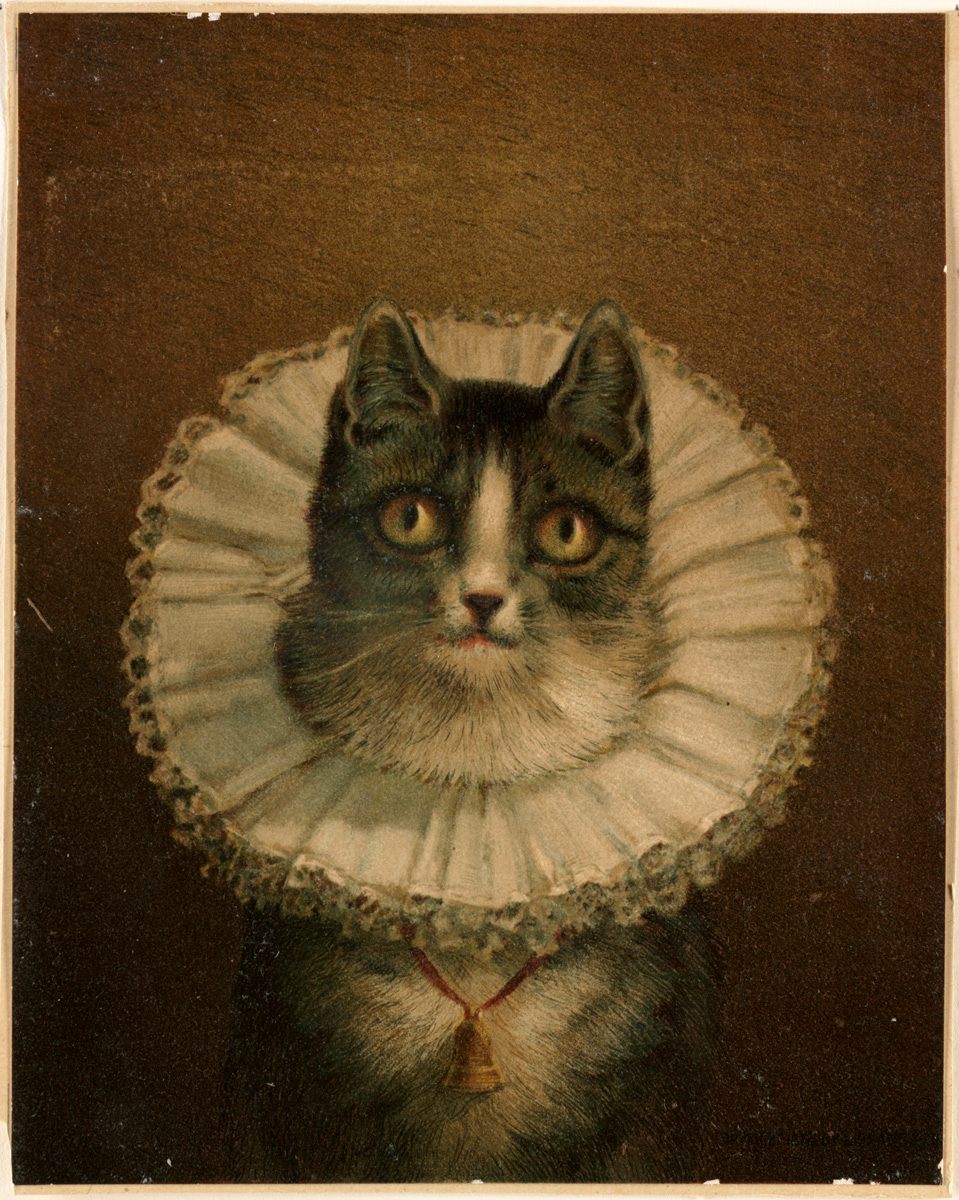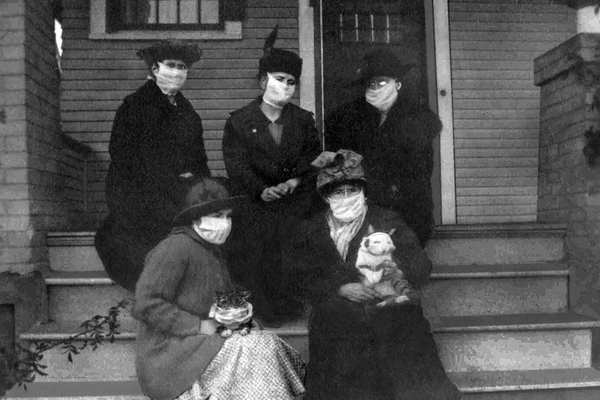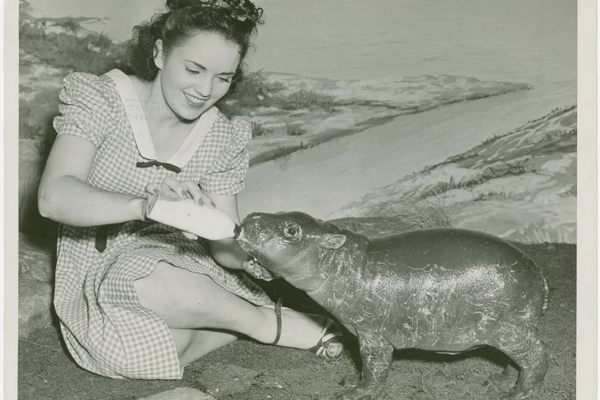Why Did American Cats Get Blamed for So Many Divorces?
A century of couples pinning their marital woes on felines.

A cat, a surprising cause for divorce. (Photo: Internet Archive/Public Domain)
In 1903, Henry Wyman Page Colson of Somerville, Massachusetts, was living in a nightmarish, Lovecraftian world. “A cat met him at every turn,” the San Francisco Call reported, and “an angry “pst” and a chorus of blood curdling “mews” greeted his every move.” When Colson slept, he had to “ exercise great care lest he should disturb the slumbers of a feline snugly ensconced between the sheets of his bed.” Getting out of bed was even harder, “lest he should expose his bare feet to the claws of numerous pussies and provoke a melody that would ring in his ears for the rest of the day.”
Unable to stand his relentless personal hell, Colon consulted a lawyer. “Who owns these cats?” the lawyer asked. Colson told him: his wife. The article continues: “Then you must have a divorce,” cried the lawyer. And the next day the suit was filed.” This is not a one-off case of odd vintage news, however. Starting in the early 20th century, a spate of divorces allegedly caused by cats received prominent news coverage.

It just so happened that cats became increasingly beloved as house pets at around the same time that the rate of divorcing couples was beginning an uptick in America, in the 1910s. Following the The Married Women’s Property Act of 1848, which gave women a claim to marital property, and subsequent modifications to divorce laws, unhappy couples were no longer doomed to stay together. But, a couple couldn’t get a divorce only because their love had waned; they often needed to prove in court that someone, or something, in the marriage was to blame.
In a group of news blurbs from California’s Lompoc Journal in 1913, a small headline declared that one man “Drew the Line at Cats:”
“To the list of divorces for seemingly trivial causes —such as “cruelty in not taking me out riding,” “cruelty in requiring me to sew on buttons,” etc., has now been added a divorce granted to a man who charged his wife with “cruelty in keeping cats in the house,” thereby preventing him from occupying his favorite chair. On the Judge’s inquiring, “Why didn’t you put the cats out of the house?” the man answered, “My wife is a member of the Society for the Prevention of Cruelty to Animals, and I was afraid she would have me arrested.”

A divorce was granted to a man who claimed “cruelty in keeping cats in the house”. (Photo: Boston Public Library/Public Domain)
Cats, in general, were relatively new fixtures for married couples to contend with; in the United States, they weren’t a popular house pet until the late 1890s. For centuries prior, cats were seen as street animals that were useful in catching vermin at best, and mangy creatures associated with darkness and evil at worst.
Following Harrison Weir’s efforts to spread his love of felines in the 1870s in England, however, house cats caught on stateside, and fast. By the 1910s, Americans were commissioning special portraits with their cats, forming cat appreciation societies, and writing articles about their care.
Unfortunately for cats and their passionate owners, the furry pets were sometimes blamed for the breakdown of marriages, even by pairs who had likely weathered tensions for years. In 1913, the Los Angeles Herald reported that a man from Milwaukee asked for a divorce after his wife Tillie threw a growler of beer at his head—for the misdeed of stepping on a cat’s tail.
Sometimes it was not just the presence of a cat that pushed a spouse over the edge, it was the number of cats present. This issue was an early mainstay of the newspaper accounts; in 1912, the Lompoc Journal reported that a Kansas City man “has obtained a divorce because his wife was keeping 35 cats in the house. It was a physical impossibility for him to kick them all around at once.”

Too many cats has also been cited as a reason for divorce, although in that case there were certainly more than two. (Photo: Internet Archive/Public Domain)
The relative newness of cats as pets was a fulcrum for these early divorce cases. Household pets were not assumed the respect they might be given today, which put couples at odds when one of them was more partial to cats. Another 1912 divorce report from the The Los Angeles Herald, a veritable record of cat and divorce news, concerned a 74-year-old Civil War veteran who could not handle his wife’s 35 cats and two dogs, in part because she “gave them more care than she gave him.” He seemed traumatized: “In all my experience of four years as a soldier,” he said, “I never had to contend with such conditions as those dogs and cats created in our home.”
Today, it wouldn’t be unheard of for someone to call animal rescue services if creatures were being mistreated in any way. In the case of these early cat-related divorces, though, the cat’s well-being got caught in the crossfire of marital woes, raising new ethical questions about feline welfare. “If a wife’s tabby cat attracts the neighbor’s cats and the neighbor’s cats keep a husband awake, is the husband justified in killing the wife’s tabby cat?” asks the Los Angeles Herald in 1920. The answer was no, he’s not, unless he wants a swift divorce. “This question, which comes home to a great many families, was an issue today in Judge Crail’s court,” the article continues.
A great many families indeed. In a United Press dispatch at the Madera Tribune in 1927, a St. Louis woman divorced her husband, saying “she did not mind her husband’s profanity but It was too much when he heaved the family cat at her.” The news article added that she asked “$1200 for humiliation for the cat striking her,” roughly equivalent to $16,035 today. In 1936 The Telegraph of Salem, Massachusetts, reported that a local woman divorced her husband because he locked the cat in the refrigerator “and nearly froze the poor thing to death,” something that would result in more than a divorce these days. “The divorce was granted,” the article concludes. Hopefully, the judge included an order for the ex-husband to stay far away from cats.
In 1936, Spokane, Washington’s Daily Chronicle used a likely farcical news stub to make fun of the whole cat divorce story, which at that point was probably feeling like a trope. “H.S Briscoe of Los Angeles had a wife. His wife had a cat. The cat, he claims, had fleas. The fleas, he claimed, bit his mother. Now Mr. Briscoe has a divorce,” it read, before advertising the want ads section of the newspaper.

Many old newspapers reported on divorces being caused by cats. (Photo: Internet Archive/Public Domain)
While many of these stories hail from the 1920s and earlier, cat-related marital disputes continued for at least a few more decades. A headline at The Milwaukee Journal bluntly reported, in 1947, “Wife Likes Cat, Husband Doesn’t; He Asks Divorce.” After 24 years of marriage, allegedly, the problem was that the wife let the cat inside, despite the creature’s fondness for damaging furniture. In the end, the real issues were revealed: the husband wanted his wife to go out with him more to “amusements.” Both accused one another of nagging.
U.S. states only began adopting no-fault divorce laws, which don’t require anyone to be at fault in order to end a marriage, in 1969—though the spread of this law has been slow (New York only adopted a no-fault divorce option in 2010). Not coincidentally, 1968 saw one of the last accounts of cat-related divorce, when the Desert Sun reported that a California man “won a divorce Thursday on grounds of extreme cruelty because his wife loves cats.” In court, the man testified that “his wife Florence kept as many as 50 cats around the house and they upset him.” His wife testified that she “had only 15 cats at this time plus three dogs,” and since her husband often didn’t come home at night, they were both interested in splitting up.
As you might have guessed, cats really weren’t the main cause of problems for these couples; they were furry scapegoats for larger issues. Meanwhile, up to 96 million cats now live in American homes, so their presence isn’t as likely to cause conflict. As divorce grew more common in the U.S., and elaborate rationales were no longer required to dissolve a marriage, news reports on divorces tapered off, and this strange brand of cat-centric marital unhappiness was lost to time.
Maybe if some of those unhappy cat-owning couples had the memes and cat cafes of today to let off steam, they could have worked it out. No marriage is purrfect, after all.

























Follow us on Twitter to get the latest on the world's hidden wonders.
Like us on Facebook to get the latest on the world's hidden wonders.
Follow us on Twitter Like us on Facebook